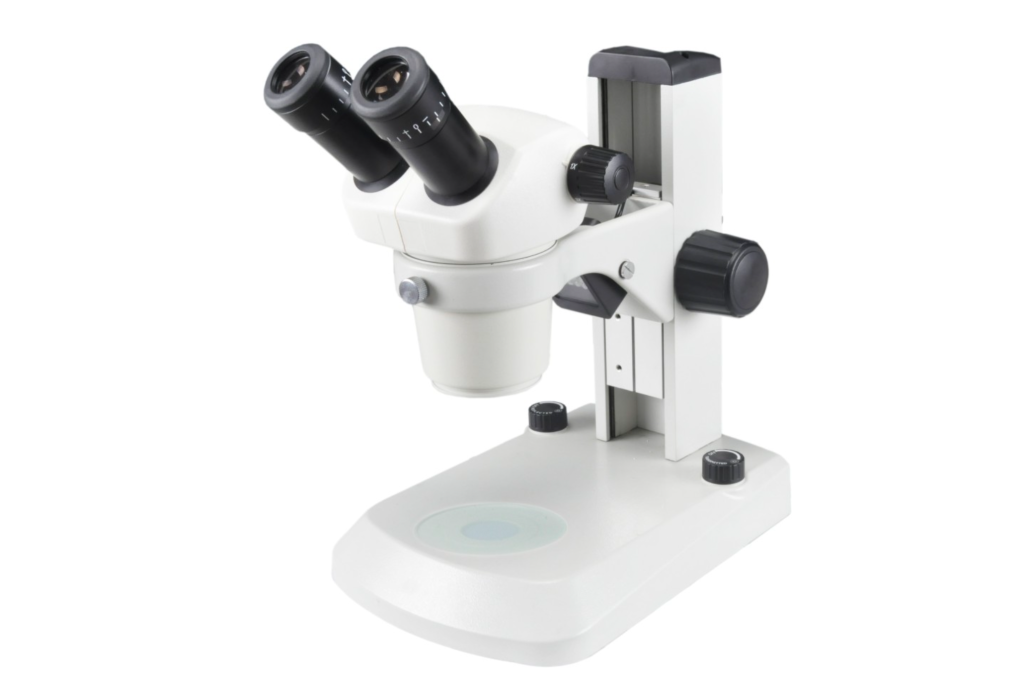I. Choosing the Right Stereo Microscope for Your Application
Stereo microscopes are often the primary choice in laboratories or production settings for three-dimensional perception of samples. Users frequently spend considerable time performing microscopic analysis, observation, documentation, or dissection through eyepieces. Therefore, careful selection of a microscope is crucial to ensure it meets the user’s needs.

This article advises users to carefully consider their requirements before evaluating and selecting a microscope. It also describes the key factors that influence the performance of stereo microscopes, which are crucial for specific user applications.
II. When Should Stereo Microscopes Be Prioritized?
The distinctive feature of stereo microscopes is their ability to generate three-dimensional images of samples. Therefore, they are particularly suitable for microscopic analysis and repetitive tasks in manufacturing environments, quality control, research and development, or failure analysis. They can also be used for specimen classification, screening, and handling in the life sciences field, as well as for educational activities in school classrooms and university laboratories.

- Step 1: Understanding Your Needs
Before selecting a stereo microscope, consider the type of application and how factors such as sample types, applications, users, and budget will influence your decision.
Sample Considerations:
- What types of samples need to be observed?
- Do you need to adapt to different types of samples or just one type for efficiency?
- What are the structures of the samples you need to observe?
- Do you need to observe reflective samples, such as metal components, or inspect cavities?
- How large are the samples?
- If focusing on life science applications, is fluorescence imaging required?
Application Considerations:
- How do you need to handle the samples?
- Besides observing samples, do you need to record and measure them?
- Do you need to discuss images or measurement results with colleagues or students?
- Does your task involve observing samples while simultaneously sorting, classifying, or handling them?
User Considerations:
- Are there multiple users of the microscope, and if so, how many?
- How long does each user typically use the microscope?
- Depending on the number of users, the microscope should be able to adapt to each user’s preferences and physique quickly. Ergonomic accessories are essential for preventing bodily injuries due to repetitive movements during prolonged microscope use.
Budget Considerations:
- How many microscopes are needed, and what is the budget?
- There are stereo microscopes available at various price points. Understanding your budget helps you prioritize or select modular solutions that best fit your needs. Remember that while the initial investment for modular solutions may seem higher, they may save money in the long run due to their versatility in meeting different user needs and having a wide range of accessories.
2. Step 2: Making Informed Decisions
When evaluating different options, it’s essential to understand the key factors that determine the performance of stereo microscopes and the users who will be using them. The following five points outline the critical factors to consider.
- Zoom Range, Magnification, Field of View, and Working Distance
- Depth of Field, Resolution, and Numerical Aperture (NA)
- Optical System Quality
- Illumination
- Ergonomics

III. Five Key Factors When Purchasing a Stereo Microscope
1. Zoom Range, Magnification, Field of View, and Working Distance
- The total magnification of a stereo microscope is the product of the objective, zoom optics, and eyepiece magnification.
- The field of view diameter depends on the total magnification.
- Working distance is the distance between the objective front lens and the top of the sample, affecting the ease of sample manipulation during microscope use.
2. Depth of Field, Resolution, and Numerical Aperture (NA)
- Depth of field is inversely related to numerical aperture, resolution, and magnification.
- Adjusting microscope settings appropriately balances depth of field and resolution for optimal visualization of samples.

3. Optical System Quality
- Chromatic and spherical aberrations can distort images; quality optical designs aim to minimize or eliminate these issues.
- Lenses with achromatic or apochromatic correction are used to limit these effects.
4. Different Lighting Types
- Incident lighting can be used for opaque samples, providing appropriate contrast for sample details.
- Transmitted lighting is suitable for various transparent samples, from biological specimens to polymers and glass.
- Standard transmitted bright-field illumination is suitable for all types of transparent samples, offering high contrast and color fidelity.
- Oblique transmitted lighting is useful for nearly transparent colorless samples, providing excellent contrast and visual clarity.
- Dark-field illumination is used for small features on flat areas of samples that are difficult to see in bright-field, such as cracks, pores, or tiny protrusions on shiny or bright samples. It can also be used to display structures smaller than the resolution limit.
5. Ergonomics
- Each user’s physique and work habits vary; therefore, the eyepiece height of the microscope may not be suitable for every user.
- To compensate for this height difference, variable binocular tubes are recommended.
- A wide range of ergonomic accessories is available to ensure efficient workflow execution.
